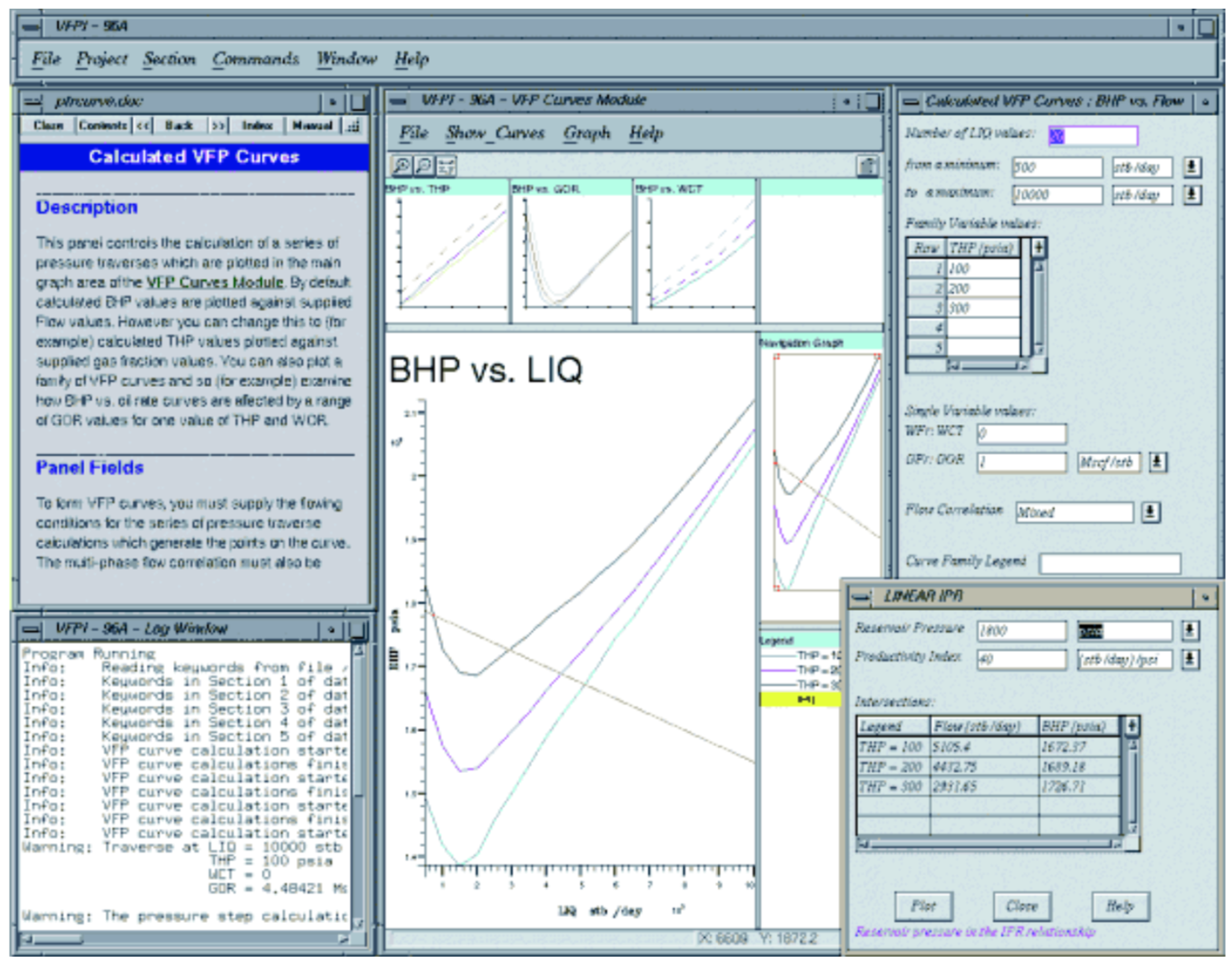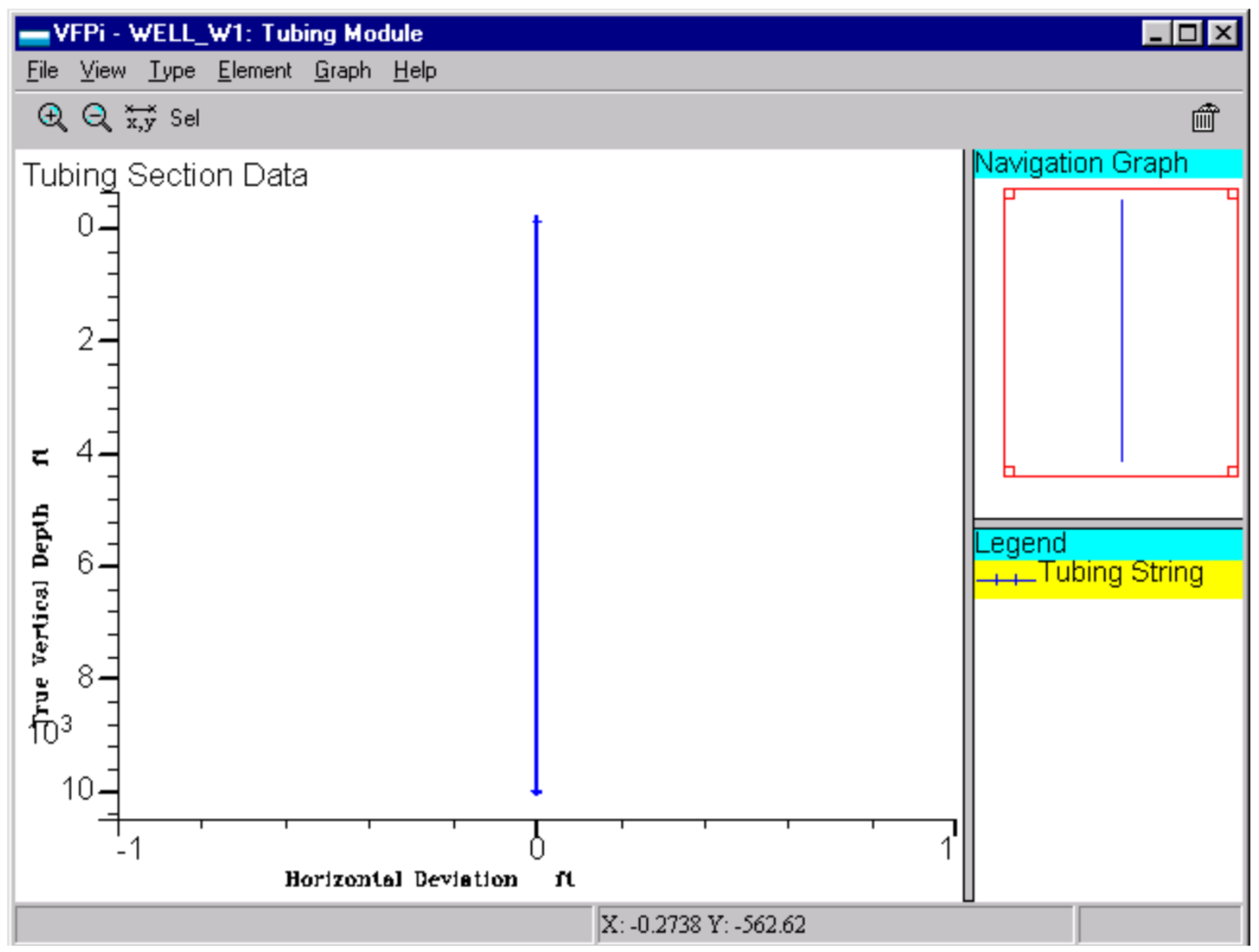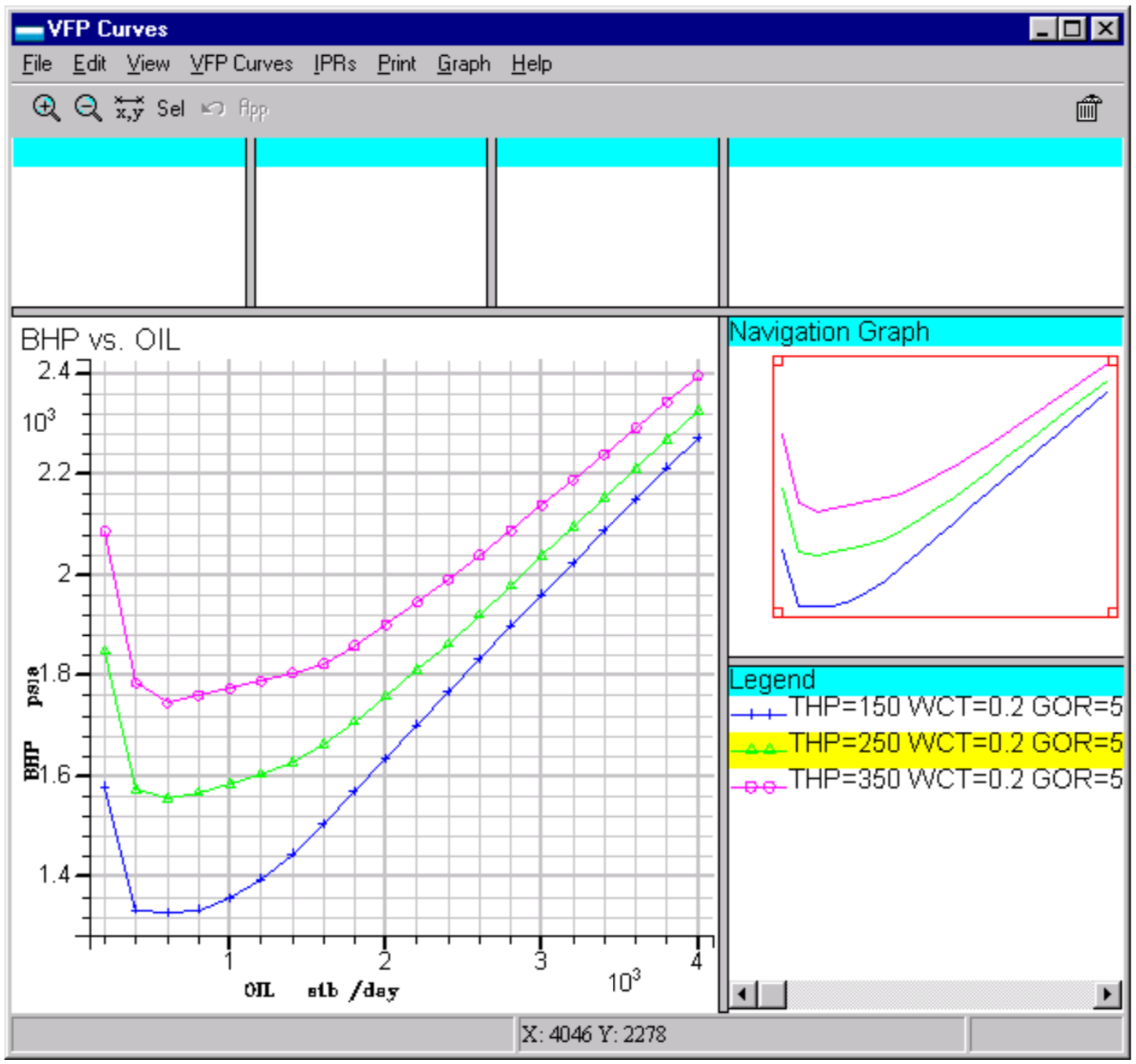VFPi
VFPi is the graphical, interactive successor to the Vertical Flow Performance program, VFP. Through a series of graphical modules, control and data panels, it allows you to study all aspects of pressure traverse calculations along wells and pipelines for black oil and compositional fluids. You can also generate and examine production and injection vertical flow performance tables for input into the ECLIPSE and VIP simulators.
VFPi is able to perform pressure traverses using data from more than one well within a single session of the program. This multiple-well data is controlled from the data tree window, with each well represented as a node connected to the root of a tree-like structure. This feature allows you easily compare pressures losses between differing wells and also offers greater flexibility when analyzing and designing wells and pipelines.
VFPi is backwards-compatible with VFP, in that it can read a VFP keyword data file and so set up all the elements involved in a pressure traverse calculation. You may then graphically examine the fluid properties of the wellstream as well as the tubing string through which it flows. You can perform single pressure traverse calculations to study the variation of pressure, gas velocity, temperature etc. along the length of the tubing. You can also perform a series of pressure traverse calculations and so form VFP curves. Complete flexibility is afforded in plotting these curves either as a family in a 2D graph or as a surface in a 3D graph.
As well as creating VFP tables, VFPi can read in and plot cross-sections from existing tables. This facility enables you to make graphical comparisons between different VFP tables and between calculated curves and table cross-sections. Again the cross-sections may be plotted in 2D or 3D. The 2D cross-sections can be graphically edited and the changes then applied to the VFP table itself. You may superimpose well IPRs on 2D curves and cross-sections to provide an estimate of flow rates at a given set of conditions.
VFPi offers you the choice of seven multi-phase flow correlations to calculate the pressure traverse:
- Aziz, Govier and
- Fogarasi Orkiszewski






